JTF (just the facts): A total of 233 vintage gelatin silver photographs, 26 works of advertising-related material (lithographs, book-jacket covers,photo collages) 9 photobooks, 23 periodicals, and 4 films (16 mm. transferred here to video), displayed against white walls in 6 divided rooms on the third floor of the museum. The works by Stern date from 1928-1951 (framed in white and matted); by Coppola from 1928-1938 (framed in black and matted).
The exhibition is accompanied by a catalog, published in 2015 by the Museum of Modern Art (here). Hardcover, 9 ½ x 12 inches, 256 pages, with 280 black and white illustrations. Includes essays by Roxana Marcoci, Sarah Meister, and Jodi Roberts, as well as selected artists texts compiled and translated by Rachel Kaplan. Hardcover $60. (Installation shots below. Photos by John Wronn. ©The Museum of Modern Art, New York)
Comments/Context: When assessing husband-and-wife artists from the heyday of Modernism, historians used to favor guys over gals by a wide margin. If measured by space in standard textbooks, Robert once crowded out Sonia Delaunay, while Josef towered over Svetlana Albers. Diego Rivera was for years treated as the dominant partner to Frida Kahlo, as Alfred Stieglitz was in his marriage with Georgia O’Keeffe.
Only since the 1970s, as feminism took hold in academia, have women artists found space in journals, catalogs, and on the walls of museums to enable audiences more fairly to judge who did what when, better or worse or just differently.
In the case of Grete Stern and Horacio Coppola, two Modernist photographers of minor reputation, born more than a century ago and only now having expansive shows in New York, it is the male artist who most needs sympathetic attention.
Stern (1904-1999) is at least celebrated for a handful of images. Sueño No. 1: Articulos eléctricos para el hagar (Dream No. 1: Electrical Appliances for the Home), her 1949 surrealist photo-collage of a woman as a slinky table lamp being turned on by the strong fingers from a man’s hand, was one of the hits of Faking It: Manipulated Photography Before Photoshop, Mia Fineman’s historical survey at the Met in 2013. The entire Sueños (Dreams) series, of which 46 negatives survive, was exhibited at this year’s AIPAD. Stern’s collaborations with Ellen Auerbach in early 1930s Berlin, where the duo formed the ringl + pit ad agency, are even better known. Their partnership was the subject of a documentary film in 1995 and of a small MoMA show in 2006.
Coppola (1906-2012), on the other hand, has no paper trail of distinction. Outside of his native Argentina, where he was an early convert to Modernism in the late 1920s and later an evangelist for the style, his name draws a blank in most art circles. Parr and Badger cite his Buenos Aires, published in 1937, in volume 2 of their photobook history. But not until 2011 were Coppola’s photographs exhibited in New York, and then only in an imported group show titled Light of Modernity in Buenos Aires (1929-1954) at the Nailya Alexander Gallery. Since then, nothing until now.
MoMA’s co-curators, Roxana Marcoci and Sarah Meister, make a persuasive case that both Stern and Coppola deserve to be more prominent in the annals of photographic Modernism. While neither is so shockingly original as to cause major revisions, each contributed solidly in different ways to the New Vision tradition. Most of these works, if unevenly interesting, have not been seen in this country until now and are worthy of the scholarly appreciation they receive here.
Stern was born in Germany, Coppola in Argentina. They met in 1932, as students at the Bauhaus when it was in Berlin. She continued there after its move in 1933 to Dessau while also studying privately with the exacting Walter Peterhans. When Hitler’s election made Germany unsafe for Stern—her background was Jewish and her mother committed suicide rather than face internment in a concentration camp—she and her brother moved to London in 1935. Coppola soon followed and the couple were married there before moving later that year to Buenos Aires, where their first child was born. Although divorced in 1943, both spent their remaining years in Argentina.
As if to find a comforting reference for Americans to guide them through the unfamiliar terrain of the Buenos Aires art scene of the 1930s and ’40s, the curators tie their fortunes to Jorge Luis Borges. He is cited more often than anyone else, except the artists, in the catalog. It’s true that he was a friend of both artists and used their photos to accompany some of his writings. As a literary Surrealist and Argentina’s most famous 20th century cultural export, he offers an easy handle for interpreting both Stern’s and Coppola’s photos.
But it is probably more accurate to think that Borges was himself a product of burgeoning Modernist thought in Argentina. Coppola drew on this energy at centers like the Amigos del Arte, founded in 1924, and the Cine Club de Buenos Aries, where he was a founding member. (As Meister says in her catalog essay, he credited the Soviet films of Vertov and Eisenstein, rather than the photographs or teachings of Moholy-Nagy, with making him a Modernist.)
The show is organized in alternating sections, with one artist given a room and then the other. The first room is devoted to Coppola and helps to correct the impression, given in Parr and Badger, that he needed the Bauhaus to be a New Vision photographer. Images from 1928 reveal him testing out tricks in that style—high angled shots of prosaic things, prismatic reflections—two years before his first trip to Europe in 1930. Examples of his work from the German years show him more overtly quoting Surrealist sources, such as Bellmer and De Chirico.
More intriguing is the third room of photos taken during his 1934 trip to London. They demonstrate again how the innovation of the small hand-held cameras with a fast lens translated foreign experience for a generation of flaneurs. A stranger in a land where he barely spoke the language, Coppola did not photograph tourist sights. Instead, you can see him trying to ground himself by giving a Surrealist tinge to ordinary street scenes: the backs of policemen; men asleep in a park; the outdoor pens of a slaughterhouse; a cul-de-sac in a housing project.
At a corner in Chinatown, he stands so that he can frame both the Chinese ideograms painted on the side of the building and the English signage on the store front (“Fry’s Chocolate.”) Coppola was a native speaker of neither language. But he understood that photography could formalize his alienated sense of the world. Cartier-Bresson’s images in the early 1930s—of Paris, London, Spain, and New York—have these same exploratory qualities, as do Evans’s of Cuba.
The wall of photographs in the next room, done after 1935 when he returned to Argentina—and the basis of the book Buenos Aires—are meant to present Coppola at the height of his powers. Meister puts these views of the Argentine capital—teeming with urban crowds on the streets or at racetracks, shopping at department stores, walking through illuminated streets at night—on a par with Brassäi’s of Paris and Brandt’s of London.
This is a stretch. Perhaps because the prints are hung salon-style, many of them too low for their details to be read, or, more likely, because Coppola failed to channel the nocturnal otherworldliness of the city found in Brassäi and Brandt, only a few these photos have the haunted quality they achieved. If I knew Buenos Aires and had an interior map of these places in my head, I might change my mind. But a sneaky street picture from 1936 of three passersby looking into the front windows of a bridal shop, which are filled with staged, idealized portraits of marriage bliss, is one of the few instances where Coppola captured a magical moment. The absence of anything he did after 1938 raises suspicions that he was not an artist who sustained himself at a top level.
Stern needs less advocacy from a curator. Her ringl + pit advertisements with Auerbach are justly renowned. MoMA has provided a more complete picture of their output than previously, including not only avant-garde constructions for Komol and Pétrole Hahn but more traditional ads for Mother’s Day and shaving products—boring but well-paying jobs that no doubt allowed the agency to experiment more freely.
The duo also worked outside the ad business. One of my favorite images in the show is a small (4 7/16 x 3 5/16) Berlin landscape from 1930. Like a stage for a Beckett play (or a dream about the bleak future of Germany), it features two tall gray rows of buildings that narrow and conclude in a sheer towering blank concrete wall: no exit. In another Berlin scene an outdoor commercial portrait photographer stands for the camera in front of a ready-made bucolic painted backdrop. All he needs is a customer. Inadvertently, ringl + pit made him into one for them.
Stern’s portraits are more conventional. During her Bauhaus years, her subjects were friends, other artists, and left-wing celebrities (Bertolt Brecht, Helene Weigel, Karl Korsch.) Almost all were rendered in the tight frame beloved by Modernists everywhere, a style that favored tilted heads, cropped (or no) hair, and unsmiling expressionism as a sign of seriousness. A wall of large-format studio portraits Stern made in Buenos Aires during the 1940s of the city’s intellectual elite, including one of Borges from 1951, are even more cold and lifeless.
Her fame as a solo artist rests squarely on the photocollages she did in 1949-50 for the Argentine women’s magazine Idilio (Idyll.) Commissioned by the editors as illustrations for the dreams/fantasies/nightmares submitted by its readers, which were then analyzed by a male Freudian psychotherapist, these constructs of fear and desire allowed Stern to display the visual wit she had discovered in her collaborations with Auerbach.
In the style of Max Ernst, Hannah Höch, and John Heartfield, she concocted menacing scenarios where animals (a turtle, snail, giraffe, lion, fish, horses) and plants (trees, a calla lilly) and machines (cars, trains, typewriters) and other humans (babies, small crowds of onlookers) threatened to entrap or harm or discombobulate a single female. Vitrines at MoMA contain issues of Idilio where these strange illustrations first appeared, emblems of a time when Freud and Surrealism were best friends (Hitchcock hired Salvador Dalí to do the dream sequence in Spellbound, his 1945 film about a mental asylum) and when psychoanalysis was thought to have the answers to all kinds of social ills and sexual anxieties.
The feminist or political message here is sometimes hard to discern, as the dismayed women are all comely, white, seemingly well-off and either attracted to men or worried about their relationship to them. The Surrealism of the Sueños is also remarkably chaste and unchallenging of Argentine mores. There is only one naked body, perhaps a consequence of Stern’s working for a mass-circulation magazine in a Catholic country. Religion (a couple kisses above an oppressive row of crosses in a graveyard in Sueño No. 22) seems as much of a problem as the domineering male. Which doesn’t detract from the consistently wacky, sometimes hilarious, and undeniably modern tone of the series.
If Stern ends up after this exhibition where she began, as the more developed artist than her former husband, Marcoci and Meister have nonetheless substantially enlarged the view of Latin American photography for English-language readers. The exhibition adds to the recent information in History of the Latin American Photobook and in Urbes Mutantes: Latin American Photography 1944-2013, and furthers the worldwide detective work done for the Thomas Walther Collection. Buenos Aires has a reputation as the most European city in South America, and the artistic presence there for several decades by Stern and Coppola are two of the reasons why.
Collector’s POV: Since this is a museum show, there are of course no posted prices. Both Grete Stern and Horacio Coppola are represented by Jorge Mara La Ruche in Buenos Aires (here and here); Coppola’s work can also be found at Michael Hoppen Gallery in London (here). Neither photographer has a significant secondary market presence, so gallery retail likely remains the best option for those collectors interested in following up.



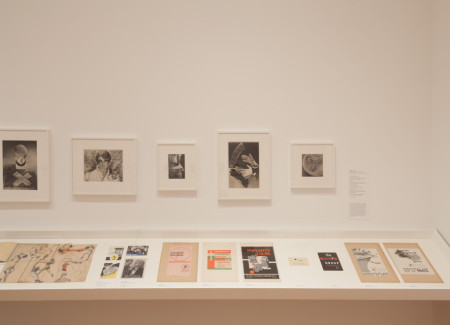
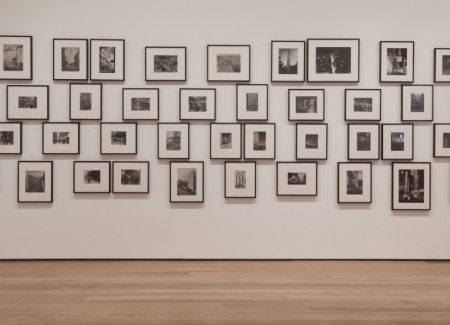
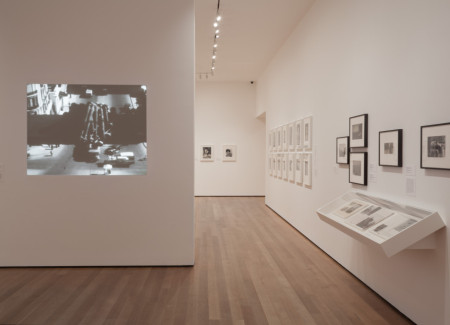

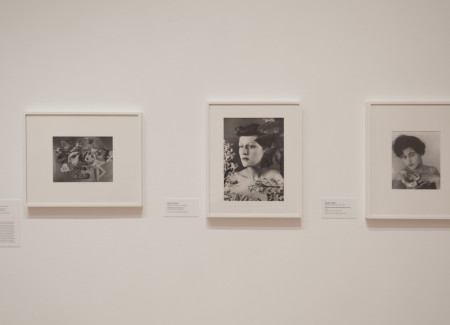
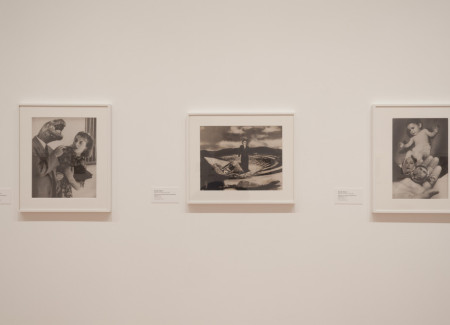
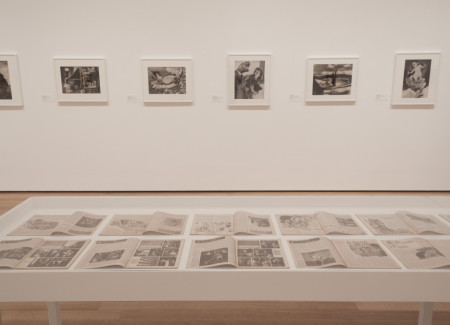






Robert Mann Gallery, until August 14, is showing some works of the ringl + pit ad agency and some photographs by Ellen Auerbach. With the title “Ellen Auerbach, classic works and collaborations”, the exhibition includes color photographs taken in Mexico by Eliot Porter in the ’50s, placed side by side with some black and white prints.
http://www.robertmann.com/15-auerbach-images